This is one possible method for repairing a broken off mounting post on the side cover of a 1982 XJ750 Seca. The post had broken off once before and was then welded on by a professional but promptly broke off again. I offered to have a look at the situation and decided to abandon the broken off post in favour of creating a new one which I hope will be stronger and more durable. With time spent taking pictures to document the repair, the whole process took less than three hours but it could easily have been done in less than one without the documentation. Time will tell how it holds up.
 |
 |
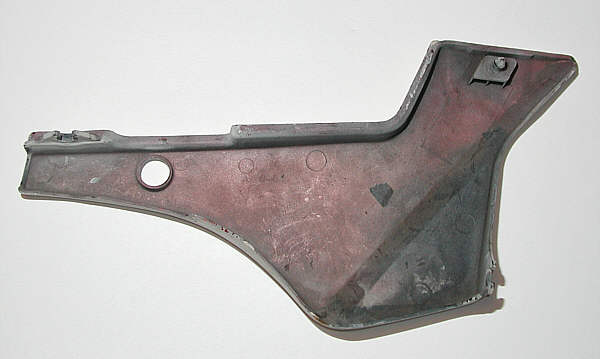 |
1
|
To repair the broken off and missing side cover mounting post it's helpful to have a spare side cover as a template. If you don't have a spare, then borrowing a side cover will also work. The borrowed cover won't be harmed in the process and would only be necessary very briefly.
|
 |
|---|
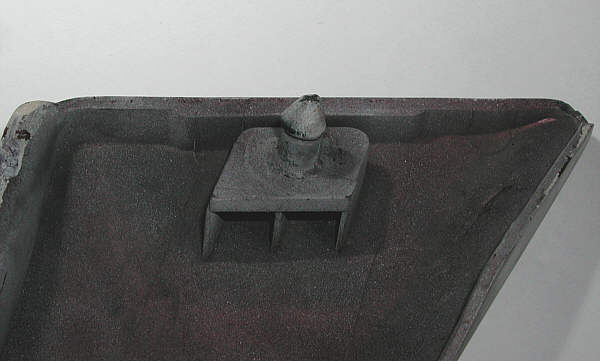 |
2
|
The spare or borrowed cover must have a good mounting post. It will be used to make a mould to create a new post.
|
 |
|---|
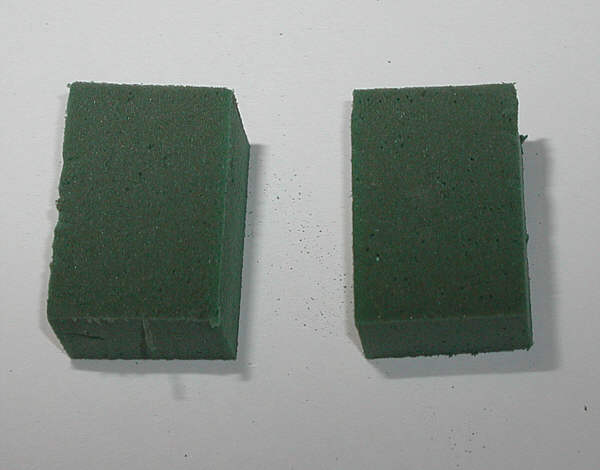 |
3
|
There are bound to be many creative ways to make a mould but I found it easiest to use a floral Oasis block. Oasis blocks are cheap (less than $1), easy to cut and don't rebound after being deformed around an object. I used a small piece of an Oasis block and cut it in half.
|
 |
|---|
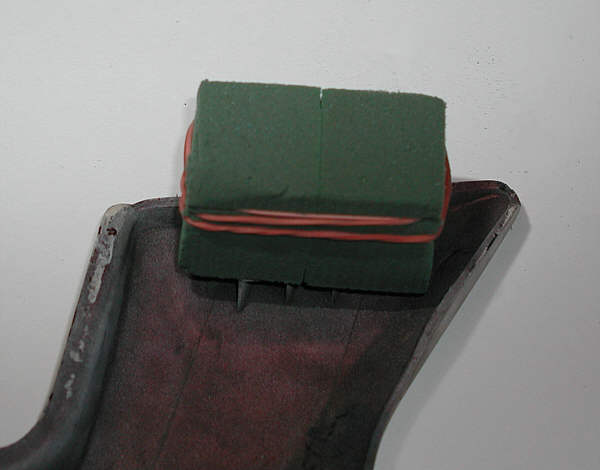 |
4
|
Simply press the two halves of Oasis block onto the good post from opposite sides, then fasten the two halves together using an elastic band.
|
 |
|---|
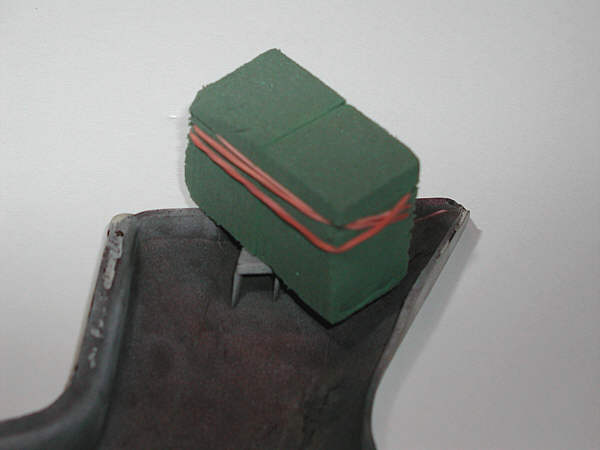 |
5
|
Since the post may not be symmetrical and the impression in the Oasis block may be less than perfect, the mould can be improved by spinning it around.
|
 |
|---|
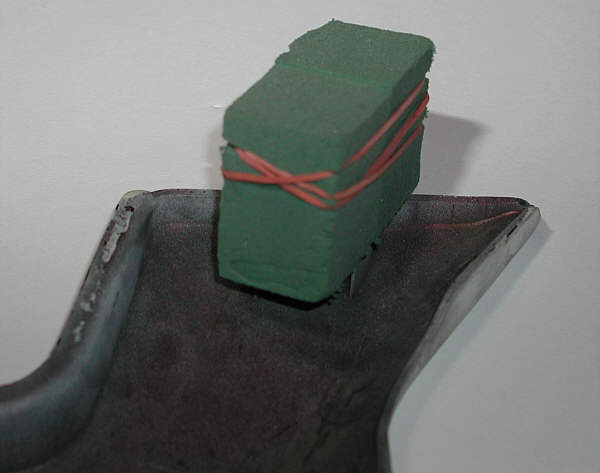 |
6
|
Spin the Oasis block around while keeping pressure on both halves to make sure you end up with a clean symmetrical impression.
|
 |
|---|
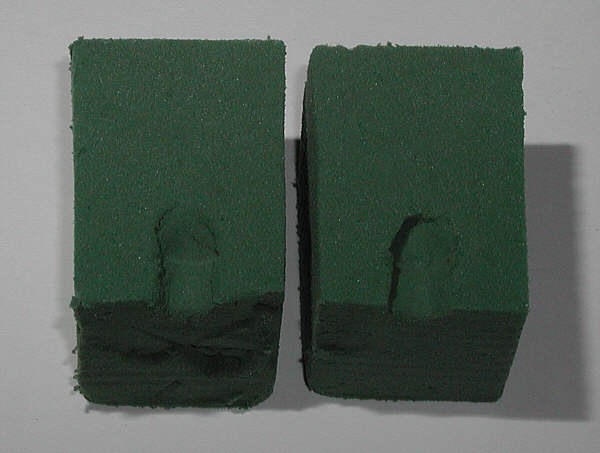 |
7
|
Remove the elastic band from the Oasis block and separate the two halves. If all went well, you should have a reasonably good impression for a mould.
|
 |
|---|
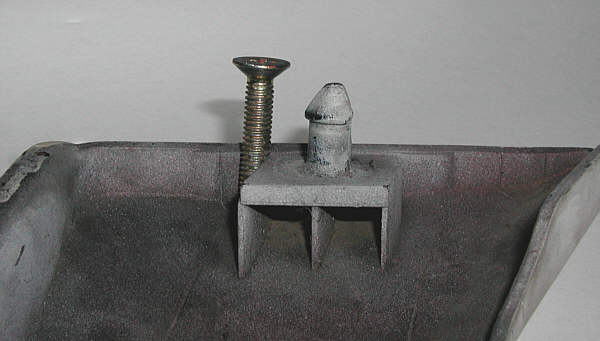 |
8
|
The new post will have to be formed around a more solid core if you don't want it to break again. For strength, anchorage and adhesion reasons, a threaded steel rod is good but a screw may be better because the head can be used to help form the knob at the end of the new mounting post. Find a screw with a thread diameter that's slightly narrower than the shaft of the original mounting post. Make sure the screw is long enough that it can be threaded right to the bottom of the mounting post base (ie. the inside surface of the side cover). I used the pictured screw but made some modifications to it later.
|
 |
|---|
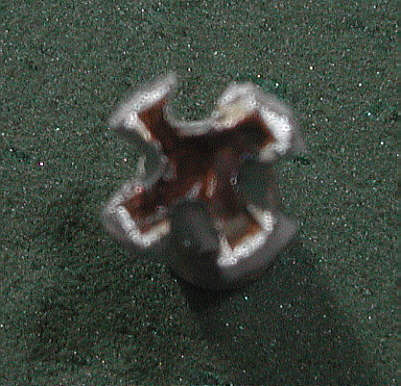 |
9
|
It was necessary to grind down the diameter of the head of the screw to something less than the maximum diameter of the knob at the end of the mounting post. The head diameter has to be small enough to keep the metal from being exposed when the mould is complete.
|
 |
|---|
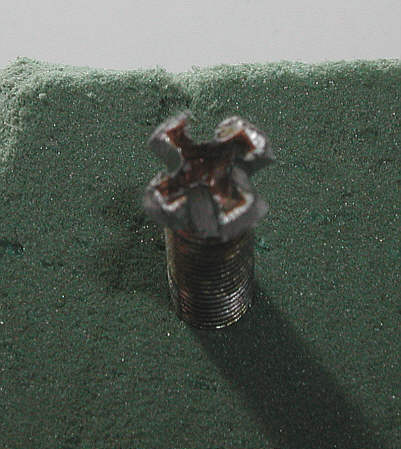 |
10
|
It was also necessary to cut a series of grooves into the head for two reasons. First, the grooves would help provide adhesion to the mould material and second, they would provide passages from the area above the head to the area below the head when submerging the threaded core into the liquid mould material.
|
 |
|---|
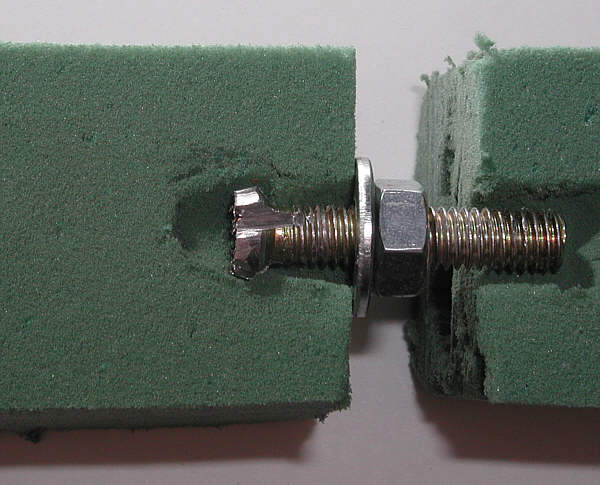 |
11
|
When the screw has been ground to an appropriate size and shape, lay it into half of the Oasis block mould to verify that the size & shape is appropriate and that it will form a good core for the new mounting post. If the screw appears too big, grind it down further until you're certain none of the metal would be exposed in the end. This is also the time to adjust the depth of the screw in the mould by winding the nut and washer to the appropriate location.
|
 |
|---|
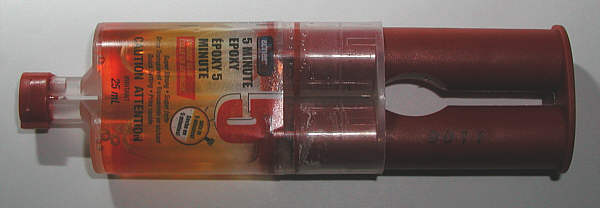 |
12
|
I found it easiest to use 5 Minute Epoxy as a moulding liquid. I knew that the epoxy would cure quickly, would be strong but wouldn't become brittle so it seemed like a good choice. I also had the good fortune of finding it at the local Dollarama for only $1.
|
 |
|---|
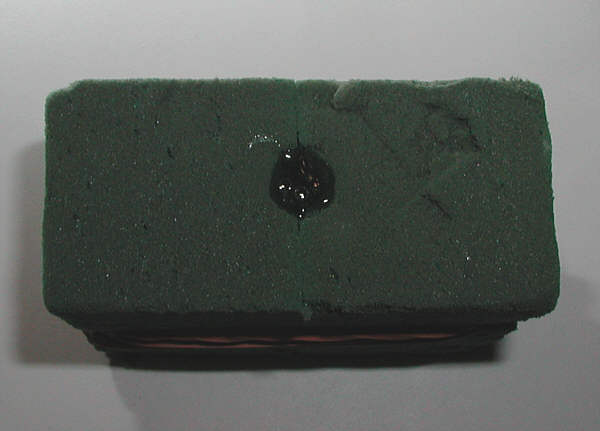 |
13
|
Rejoin the two halves of the Oasis block mould, then fill the impression with expoxy.
|
 |
|---|
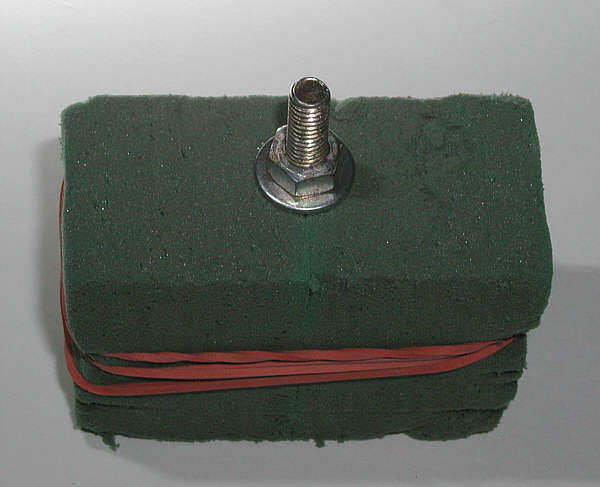 |
14
|
Insert the formed screw into the epoxy-filled mould to the proper depth which was defined earlier by the position of the washer and nut. Make sure the mould is upright and allow the epoxy to cure.
|
 |
|---|
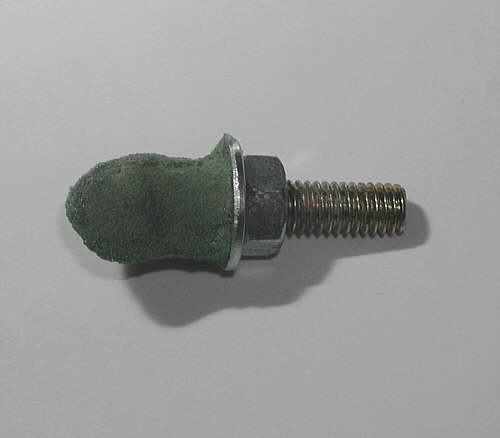 |
15
|
Separate the Oasis block mould halves and remove the rough new mounting post. If you've ever handled a floral Oasis block before, you'll know that it's very brittle. It will easily separate and fragments will be stuck to the surface of the epoxy. Because it's so brittle, it's also very easy to brush off and clean away. What you're left with is a roughly formed epoxy mounting post with a threaded metal core.
|
 |
|---|
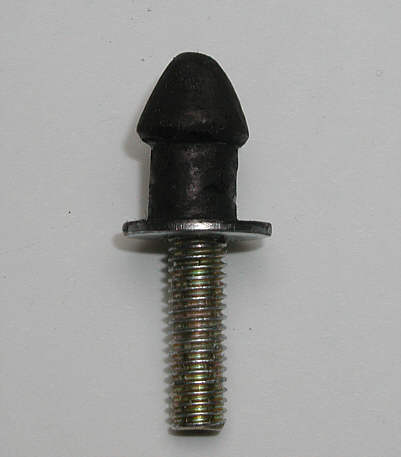 |
16
|
Clean and shape the new mounting post to approximate the original (no phallus jokes please - we all know that's what the posts look like  ). I shaped this one with a utility knife and a small file and was done in just a few minutes. To give the new mounting post a look of uniformity, I simply coloured the surface with a permanent black marker. |
 |
|---|
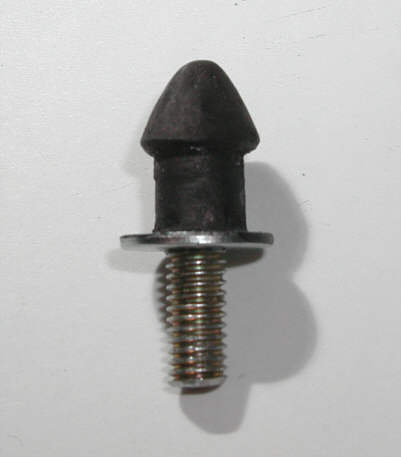 |
17
|
When the new mounting post is finished, cut the threaded shaft to an appropriate length. It's best if the shaft is long enough to reach the inner surface of the side cover. That will provide the maximum possible threaded length for anchorage in the mounting post base.
|
 |
|---|
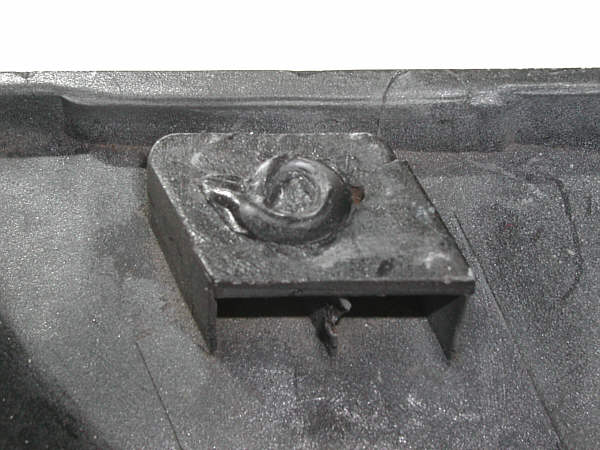 |
18
|
The side cover with the broken off post is certain to have an uneven break point. If, as in this case, it has previously been welded, there may also be a weld bead.
|
 |
|---|
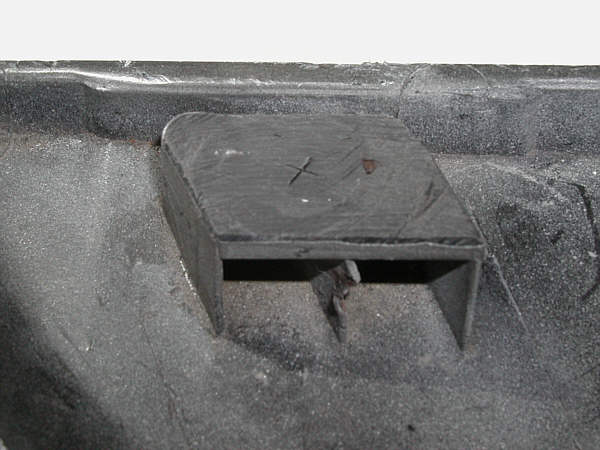 |
19
|
Prepare the top of the mounting post base by grinding it to a flat and reasonably smooth surface. I first cut away most of the weld bead with a utility knife then finished by resurfacing with a flat grinding stone. Once the top surface is flattened, locate and mark the center of the original post.
|
 |
|---|
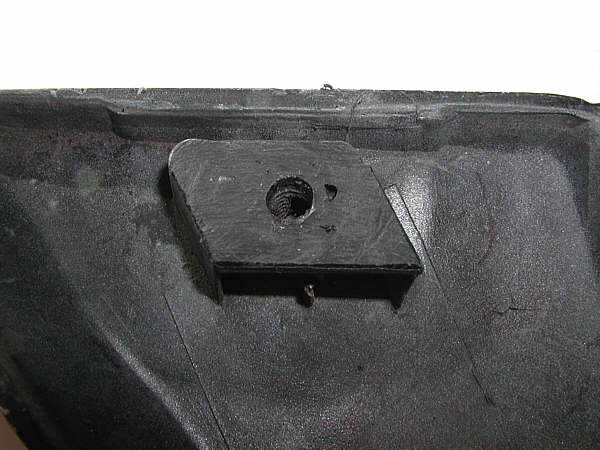 |
20
|
Drill a hole through the mounting post base, right to the inside surface of the side cover. The diameter of the hole should be slightly less than the thread diameter of the screw - in fact, the hole can be even a little smaller because the side cover material is a very soft plastic. There isn't much for the threads to screw into so a smaller hole will help keep the threaded part solidly in position.
|
 |
|---|
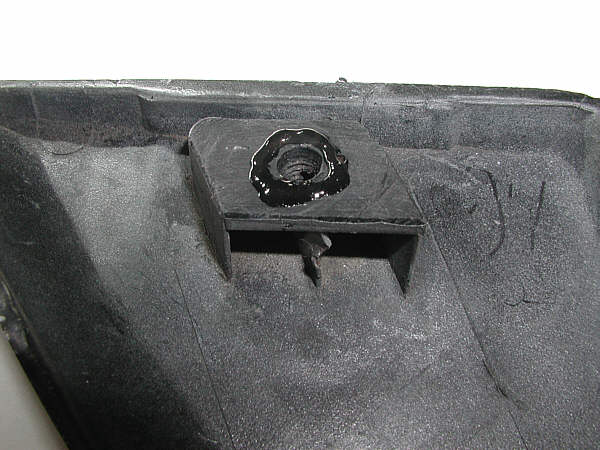 |
21
|
Apply a small bead of gel super glue around the hole where the washer will be.
|
 |
|---|
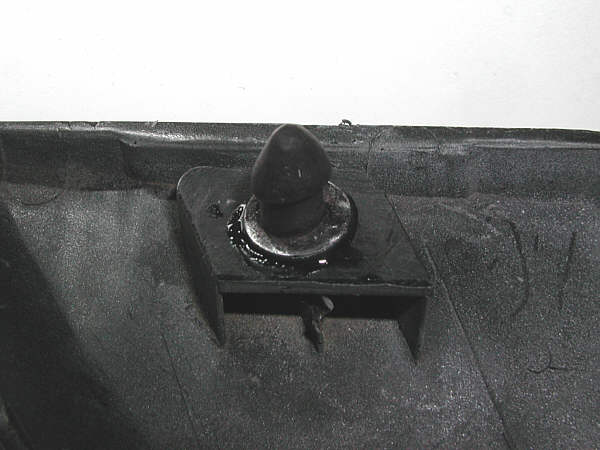 |
22
|
Thread the new mounting post into the hole in the base until the washer is snug against the surface. Be careful not to get super glue on your fingers as you tighten the mounting post in place. If you didn't leave the threaded shaft too long, the washer should contact the base and adhere to the super glue before the threaded shaft contacts the inside surface of the side cover.
|
 |
|---|
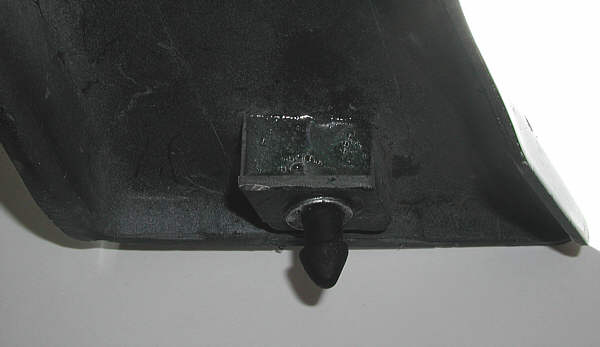 |
23
|
To finalize the repair, stand the side cover on its edge so that the open side of the mounting post base faces upward. Then fill the recesses below the mounting post base with epoxy. This will secure the threaded mounting post shaft in the base permanently (hopefully).
|